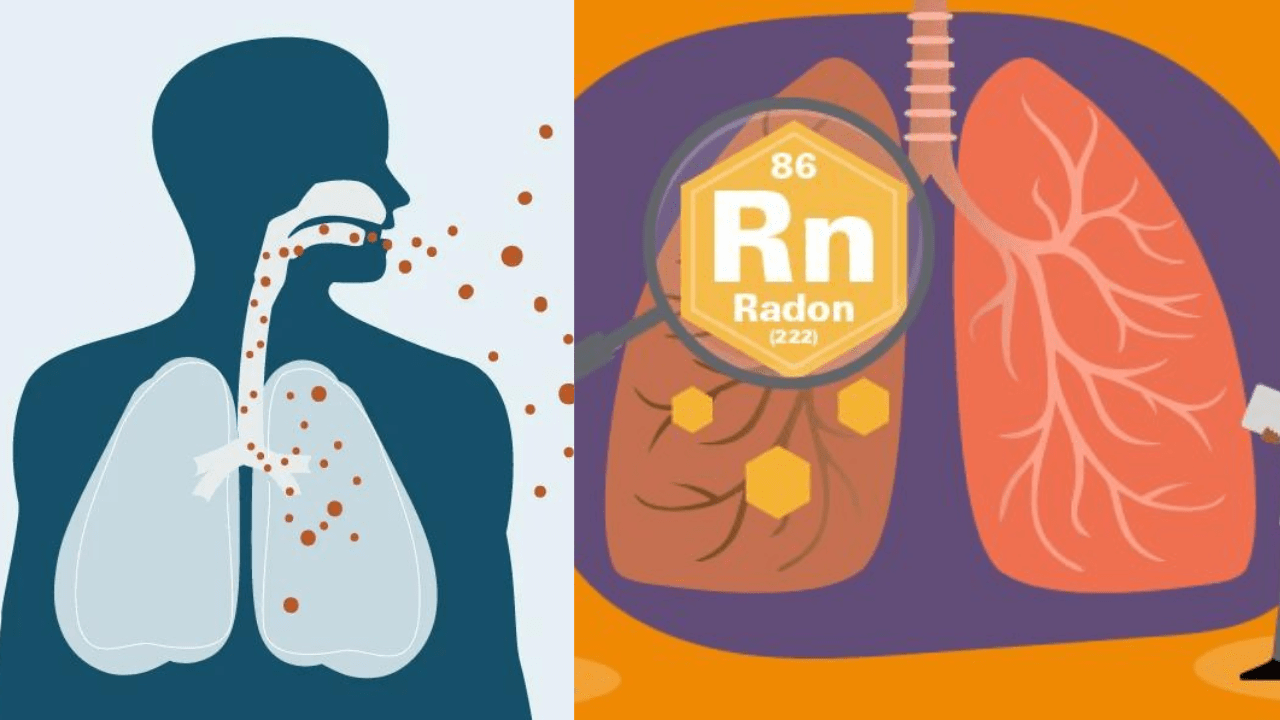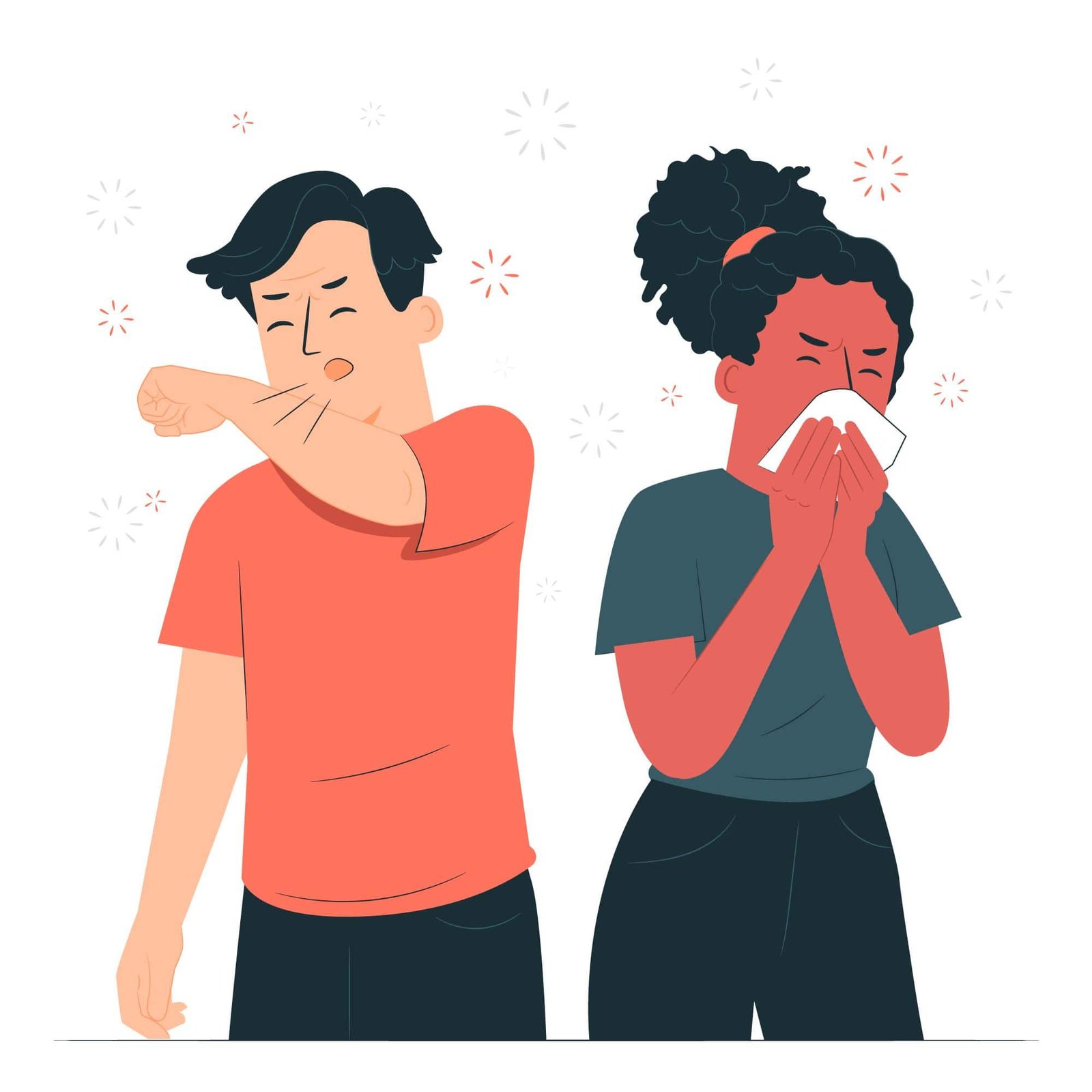Lung Cancer Crisis Unveiled as a Silent, Lethal Gas Fueling Alarming Spike in Cases Among Non-Smokers.

In the battle against lung cancer, we’ve long pointed fingers at smoking as the main culprit. But here’s a curveball: a significant rise in lung cancer cases among non-smokers is shining a spotlight on another silent killer lurking in our midst – Radon Gas.
The Radon gas, invisible and odorless, quietly seeping into our homes from the depths of the earth. It’s a byproduct of the natural breakdown of radioactive materials underground, and it’s more prevalent than you might think. This sneaky gas can accumulate in our homes and, ultimately, in our lungs, setting the stage for cancer to make its unwelcome entrance.
Startling data reveals that around 15-20 percent of newly diagnosed lung cancer cases are in individuals who have never touched a cigarette. Yes, you read that right – non-smokers in their 40s and 50s are falling victim to this insidious foe.
David Carbone, a thoracic medical oncologist at Ohio State University, sounds the alarm: “Anyone with lungs is at risk of lung cancer, and we need to take radon exposure seriously.” Luckily, there are steps we can take to minimize this risk.
First up, testing. Carbone emphasizes the importance of simple tests to measure radon levels in our homes. Armed with this knowledge, we can take action to reduce exposure. Installing a radon remediation system outside the home, increasing airflow, and sealing up any pesky cracks are all effective measures to combat this invisible threat. But the fight against radon doesn’t stop at our doorstep. Carbone calls for wider-reaching measures, including potential legislation mandating radon testing in schools, workplaces, and during home sales. After all, the effects of radon exposure are cumulative and can take decades to manifest.
Think about it: your kids playing in the basement today could unknowingly be putting themselves at risk for lung cancer down the line. It’s a chilling thought, made even more so by the fact that radon gas gives no warning signs of its presence.
So, what can we do? Stay informed, get tested, and take action to protect ourselves and our loved ones from this hidden danger. Because when it comes to our health, ignorance is definitely not bliss.
Unveiling the Hidden Danger: Radon Gas and Lung Cancer in Non-Smokers. What are the side effects of radon exposure? How to stay safe?
Let’s Find Out!
Side Effects Of Radon Exposure
- Silent-Threat: Radon exposure poses a silent threat to health. It’s colorless and odorless, making it undetectable without specialized testing.
- Respiratory Risks: Prolonged exposure to radon significantly increases risk of developing lung cancer, even among non-smokers, making it a serious concern for indoor air quality.
- Symptoms: Symptoms of radon exposure can mimic common respiratory ailments, including persistent coughing, wheezing, shortness of breath, and chest pain.
- Fatigue and Infections: Radon exposure may also lead to fatigue, frequent respiratory infections, and a general decline in overall health due to compromised respiratory function.
- Occupational Hazards: Radon exposure isn’t limited to homes; workplaces and schools may also harbor dangerous concentrations, necessitating awareness and testing in various indoor environments.


How to Stay Safe?
1. Test Regularly: It’s like giving your home a health check-up! Get your hands on a DIY radon test kit or bring in the pros for a thorough assessment. Don’t skip this step, especially if you’ve never tested before or if there have been changes to your home’s structure. It’s the first line of defense against this sneaky gas!
2. Mitigation Systems: Think of it as your home’s superhero cape against radon. If those levels come back high, fear not! Radon mitigation systems swoop in to save the day. They work like magic, venting radon from beneath your home and sending it packing outside, ensuring your indoor air is clean and safe.
3. Seal Cracks and Openings: Time to patch up those sneaky entry points! Radon can sneak in through the tiniest cracks, so grab your sealant and get to work. Pay close attention to spots around pipes, drains, and utility penetrations – they’re like radon’s secret passageways!
4. Improve Ventilation: Let your home breathe easy! Make sure your spaces are getting enough fresh air, especially in those radon hotspot areas like basements and crawl spaces. Throw open those windows, switch on those fans, and let radon know it’s not welcome here!
5. Choose Radon-Resistant Materials: Building or renovating? Time to armor up against radon! Opt for radon-resistant construction materials and techniques. From special sub-slab materials to sealing up foundation cracks, these defenses help keep radon at bay from the get-go.
6. Seek Professional Help: When in doubt, call in the experts! If you’re scratching your head about radon levels or how to tackle them, don’t hesitate to reach out to a radon mitigation professional. They’ll swoop in with their knowledge and tools to save the day.
7. Educate Yourself: Knowledge is power, so arm yourself! Stay in the know about the dangers of radon exposure and the importance of testing and mitigation. Spread the word to your loved ones and neighbors – together, we can kick radon to the curb and breathe easy!
